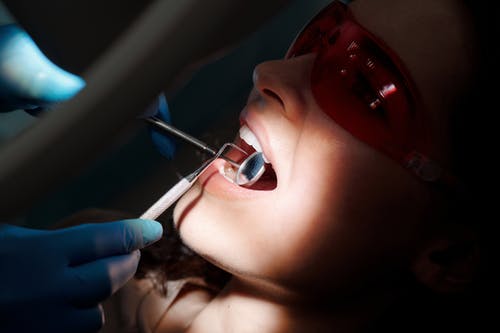If you’ve been dealing with foot pain or discomfort, you may have heard about custom-made orthotics as a solution. But before you jump in and get your first pair, you should know a few things. This article covers the basics of custom-made orthotics, what to expect, and how to find the right provider.
What Are Custom-Made Orthotics?
Custom-made orthotics are specialized inserts designed to provide support, correct biomechanical imbalances, and improve the function of your feet and lower limbs. Unlike generic over-the-counter insoles, custom orthotics are uniquely crafted to match the contours of your feet and address specific issues. Contact a reputable provider to learn more about custom-made orthotics and how they can benefit you.
Do I Need Custom-Made Orthotics?
Custom-made orthotics may be recommended for persistent foot pain, discomfort, or specific foot conditions. Here are some situations where custom orthotics could be beneficial:
- Plantar Fasciitis: If you’re experiencing heel pain caused by plantar fasciitis, custom orthotics can provide the necessary support and cushioning to alleviate pain and promote healing.
- Flat Feet: Individuals with flat feet may benefit from custom orthotics that provide arch support and help with proper foot alignment, reducing strain and discomfort.
- High Arches: High arches can lead to foot instability and pain. Custom orthotics can offer support to distribute pressure more evenly across your feet.
- Arthritis: Orthotics can help manage foot pain associated with arthritis by providing cushioning, reducing pressure points, and promoting proper alignment.
- Bunions or Hammertoes: Custom orthotics can relieve conditions like bunions or hammertoes by reducing friction and pressure on affected areas.
- Sports and Physical Activities: Athletes and individuals who engage in physical activities may benefit from custom orthotics that optimize foot mechanics and reduce the risk of injuries.
- Alignment Issues: If you have alignment problems, such as overpronation (excessive inward rolling of the foot) or supination (insufficient inward rolling), custom orthotics can help correct these issues and prevent related discomfort.
Before getting custom-made orthotics at a Hamilton foot clinic, it’s important to consult a foot specialist who can assess your needs and determine if orthotics are the right solution. They will evaluate your feet, examine your gait, and ask about your symptoms to make an informed recommendation.
Benefits of Custom-Made Orthotics
There are several benefits to using custom-made orthotics:
- Improved Foot Alignment: Custom orthotics are tailored to your specific foot structure and mechanics. They can help correct issues such as overpronation (excessive inward rolling) or supination (insufficient inward rolling) of the feet. By promoting proper alignment, orthotics contribute to better overall posture and alignment of the entire body.
- Pain Relief: Many foot conditions, such as plantar fasciitis, bunions, and arch pain, can lead to significant discomfort. Custom-made orthotics provide targeted support to alleviate pressure and distribute weight evenly across the feet. This can result in reduced pain and improved comfort.
- Better Support: Custom orthotics offer superior arch support to generic shoe inserts. By providing the right amount of support to your arches, orthotics can help prevent strain on the ligaments, tendons, and muscles of the feet. This support is particularly important for individuals with flat feet or high arches.
- Increased Stability: Orthotics enhance the stability of your feet and ankles by promoting proper alignment. This improved stability can reduce the risk of ankle sprains, falls, and other injuries, making them particularly valuable for individuals with unstable ankles or engaging in physical activities.
- Enhanced Athletic Performance: Athletes often require optimal foot mechanics to perform at their best. Custom orthotics can improve your feet’ function during activities, enhancing biomechanics and helping you perform better. Additionally, orthotics can reduce the risk of sports-related injuries by preventing improper foot mechanics.
- Prevention of Foot Issues: Custom-made orthotics relieve existing foot problems and help prevent future issues. By addressing biomechanical imbalances and providing proper support, orthotics can mitigate the development of conditions like bunions, plantar fasciitis, and more.
- Personalized Treatment: Each person’s feet are unique, and so are their needs. Custom-made orthotics are crafted based on your specific foot structure, gait, and condition. This personalized approach ensures you receive the most effective treatment for your requirements.
- Long-Term Solution: Custom orthotics offer a long-lasting solution for foot-related problems. They are designed to withstand daily wear and tear, providing ongoing support and comfort over an extended period.
How Are Custom-Made Orthotics Made?
Custom-made orthotics are crafted using advanced technology and precise measurements of your feet. The process typically involves the following steps:
1. Foot Assessment
The process begins with a thorough evaluation by a foot specialist, often a podiatrist. They’ll discuss your medical history, symptoms, and specific foot issues you’re facing. This assessment helps the specialist understand your needs and determine if custom orthotics suit you.
2. Gait Analysis
A gait analysis may be performed to assess how your feet function during movement. You might walk or run on a treadmill equipped with sensors. This analysis provides valuable insights into your foot mechanics, such as pronation (rolling inward) and supination (rolling outward), helping the specialist design orthotics that address any irregularities.
3. Foot Mold or 3D Scan
Precise measurements of your feet are essential for creating custom orthotics. This can be done through various methods:
- Traditional Casting: A plaster cast is taken of your feet in specific positions to capture their shape.
- 3D Scanning: Advanced technology is used to create a digital 3D scan of your feet, accurately capturing their contours and dimensions.
4. Design and Production
The orthotics are designed using the measurements, data from the gait analysis, and information gathered during the assessment. The design addresses your specific foot issues, supports your arches, and provides cushioning where needed. Orthotics are typically made from high-quality materials like foam, gel, plastic, or carbon fiber. The design is sent to an orthotic laboratory for production.
5. Fitting and Adjustments
Once the custom orthotics are ready, you’ll have a fitting session with your foot specialist. During this session, you’ll try on the orthotics and provide feedback on their fit and comfort. The specialist will ensure that the orthotics align properly with your feet and are comfortable to wear. If any adjustments are needed, they can be made at this stage.
6. Follow-Up and Monitoring
After you start wearing the orthotics, you’ll likely have follow-up appointments to monitor your progress. These appointments allow the specialist to assess how well the orthotics work for you and make any necessary fine-tuning adjustments to ensure optimal comfort and effectiveness.
Custom-made orthotics result from a collaborative effort between your foot specialist and skilled technicians in an orthotic laboratory. The goal is to create orthotics that provide the support, alignment, and comfort your feet need to function properly and alleviate any pain or discomfort you may be experiencing.
Finding the Right Provider
Finding a reputable provider with experience and expertise is essential when it comes to custom-made orthotics. Here are some tips to help you find the right one:
- Ask for referrals: Talk to your primary care doctor or other healthcare professionals for recommendations.
- Research online: Look for providers in your area and read reviews from their patients.
- Check qualifications: Ensure the provider is a licensed podiatrist or orthopedic specialist with specialized training in orthotics.
- Ask about their process: Inquire about their assessment methods, the technology used, and the materials they use for the orthotics.
- Cost and insurance coverage: Determine the orthotics cost and check if your insurance covers any part of the expense.
How About Foot Injections Therapy?
If you’re looking for alternative treatments for foot pain, you may have heard about foot injections in Hamilton. This minimally invasive procedure involves injecting medication directly into the affected area to relieve pain and reduce inflammation. If you’re considering foot injections, it’s essential to consult with a qualified foot specialist who can assess your needs and recommend the most appropriate treatment plan.
Conclusion
Remember, your feet are the foundation of your body, so taking care of them is crucial. Whether through custom-made orthotics, foot injections, or other appropriate treatments, finding the right solution for your foot pain can significantly improve your overall quality of life. So consult a foot specialist, explore your options, and take steps towards happy and healthy feet.




